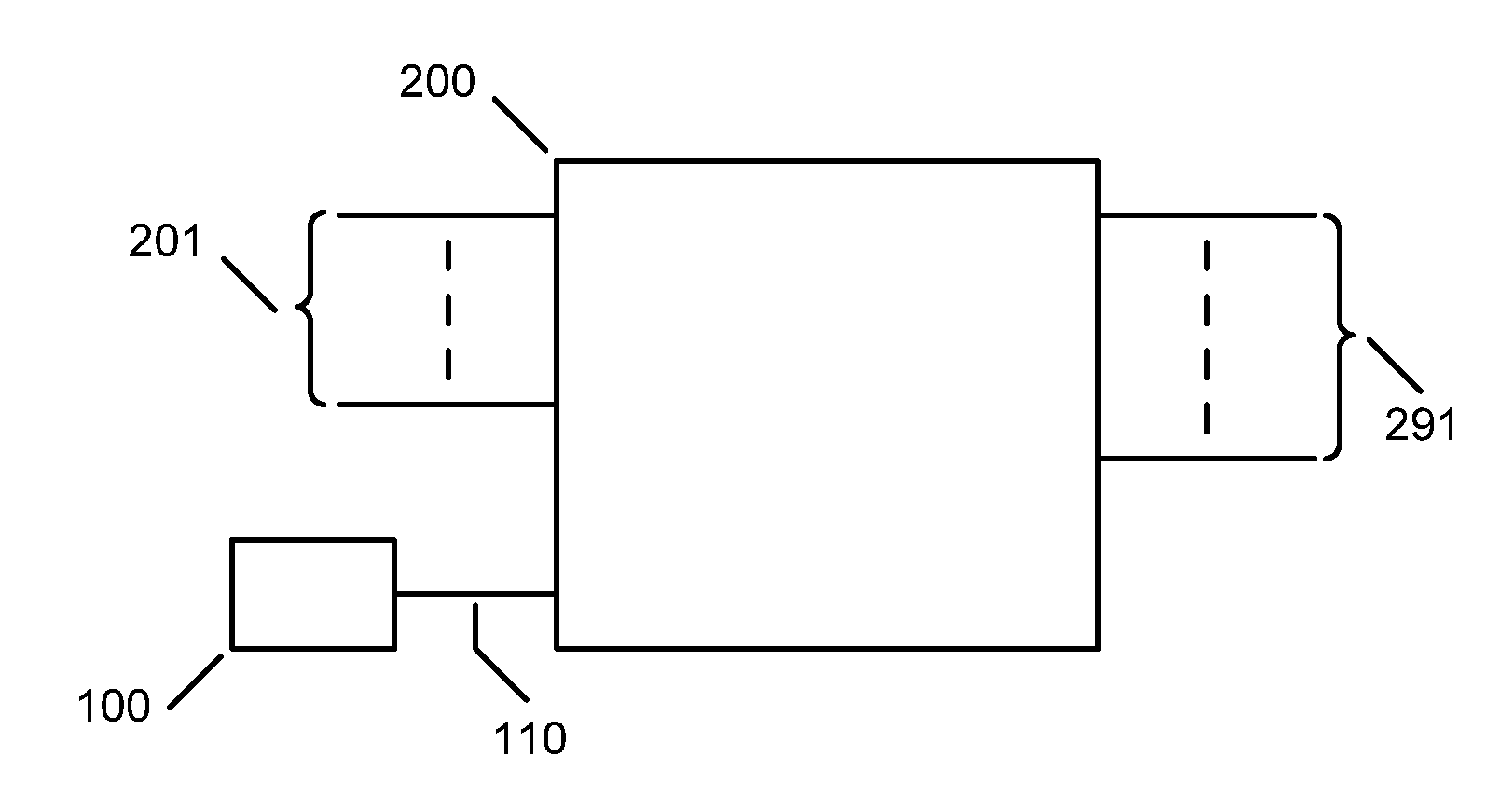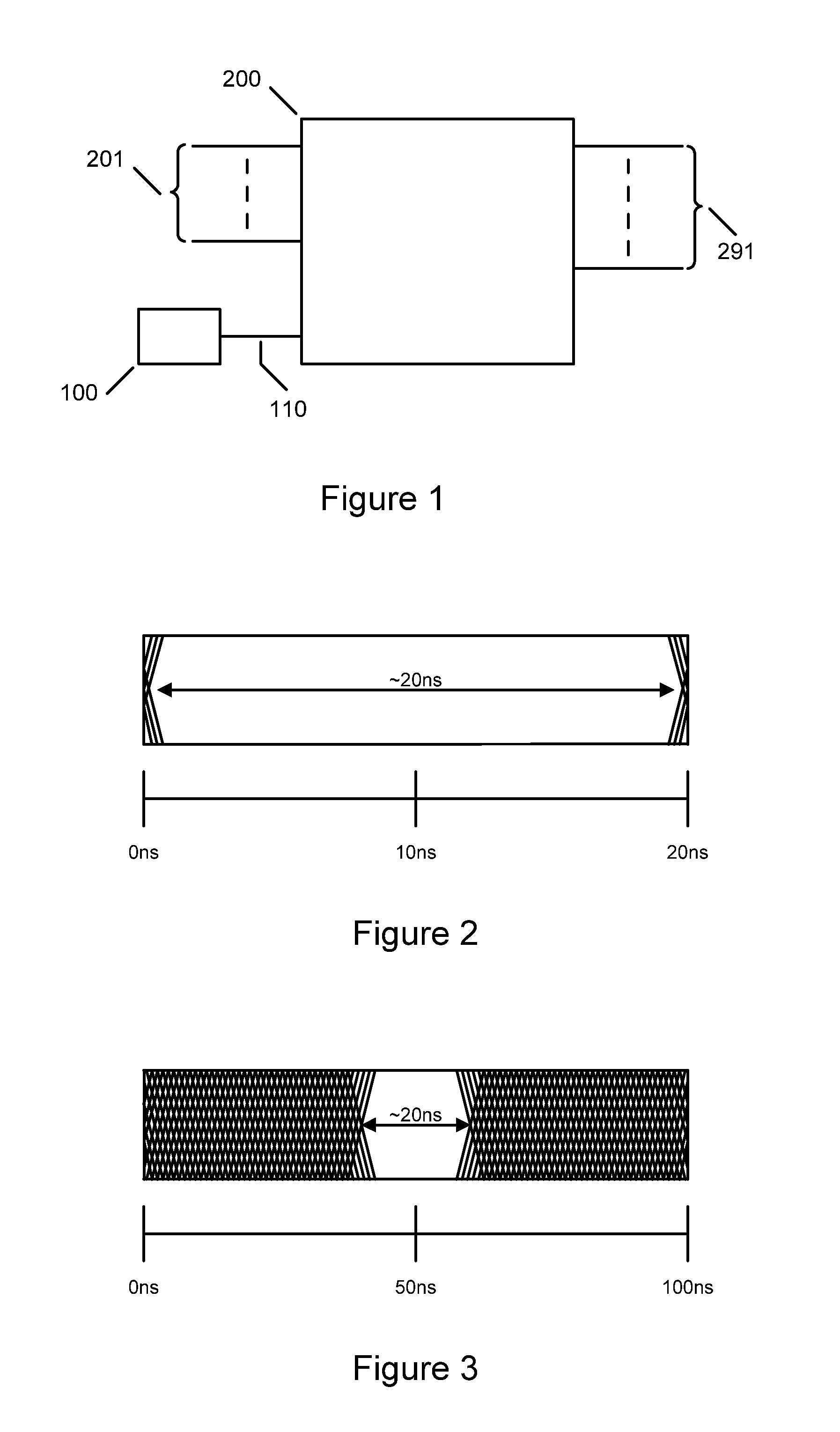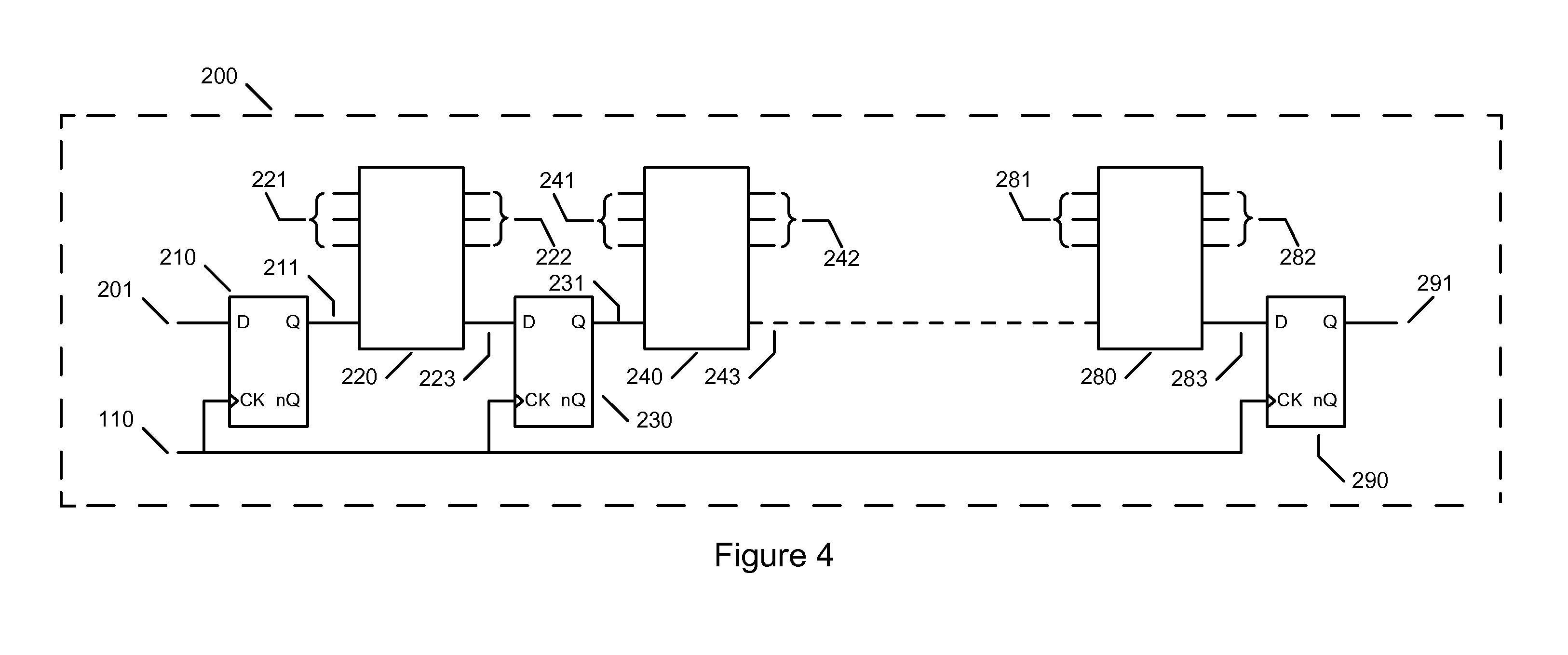Logic system with resistance to side-channel attack by exhibiting a closed clock-data eye diagram
a logic system and eye diagram technology, applied in logic circuits, computer security arrangements, instruments, etc., can solve problems such as increasing current consumption, increasing power consumption, and rendering security worthless, and achieve the effect of improving the resistance of the logic system
- Summary
- Abstract
- Description
- Claims
- Application Information
AI Technical Summary
Benefits of technology
Problems solved by technology
Method used
Image
Examples
Embodiment Construction
[0048]FIG. 1 shows a diagram of a synchronous logic system employed in the present invention. Clock generator 100 produces clock signal 110 for synchronous logic block 200 comprising one or more input signals 201 and generating one or more output signals 291. Output signals 291 may change state in response to input signals 201 at transitions of the input clock 110 based on the present and previous state of input signals 201, output signals 291, signals from internally stored states or a combination of one or all of these signals. For clarity of description, the present invention will refer to rising edge clock transitions but it will be clear to any person skilled in the art of logic design that the technique can be applied to logic systems can operate on falling edge clock transitions or both rising and falling clock edge transitions.
[0049]Where the synchronous logic systems depicted in FIG. 1 employ standard CMOS logic gates both systems will produce current peaks that may enable ...
PUM
 Login to View More
Login to View More Abstract
Description
Claims
Application Information
 Login to View More
Login to View More - R&D
- Intellectual Property
- Life Sciences
- Materials
- Tech Scout
- Unparalleled Data Quality
- Higher Quality Content
- 60% Fewer Hallucinations
Browse by: Latest US Patents, China's latest patents, Technical Efficacy Thesaurus, Application Domain, Technology Topic, Popular Technical Reports.
© 2025 PatSnap. All rights reserved.Legal|Privacy policy|Modern Slavery Act Transparency Statement|Sitemap|About US| Contact US: help@patsnap.com



